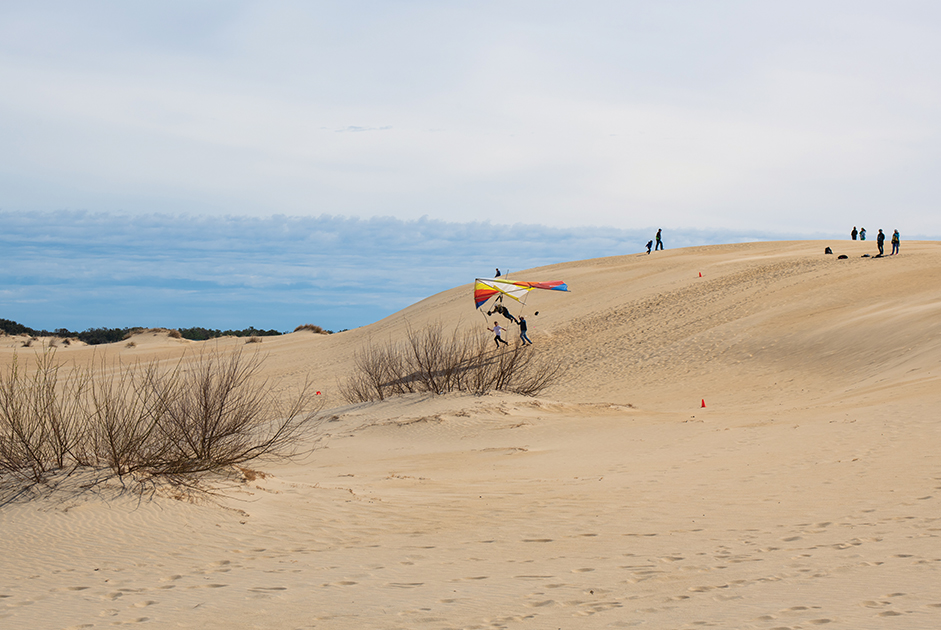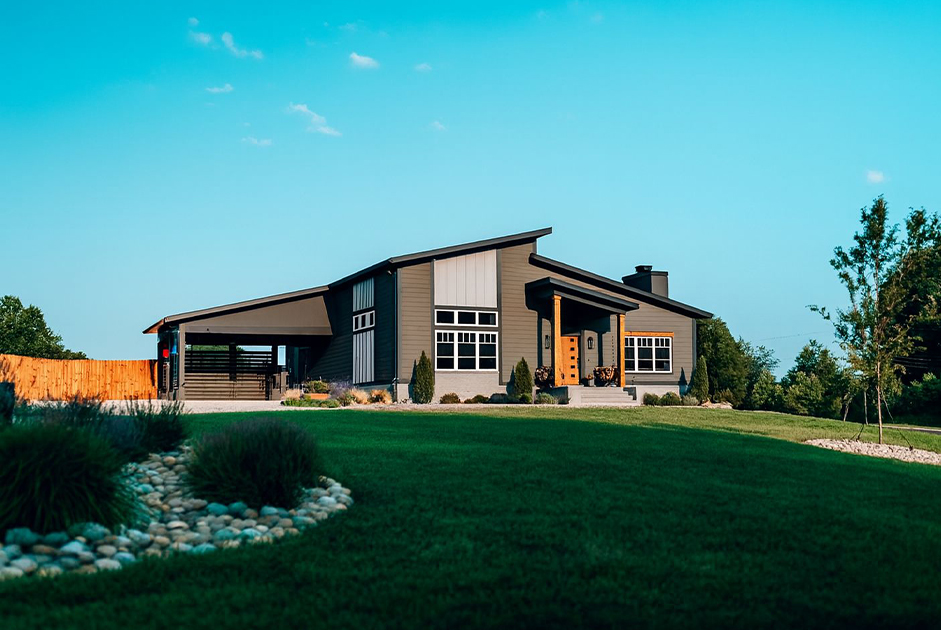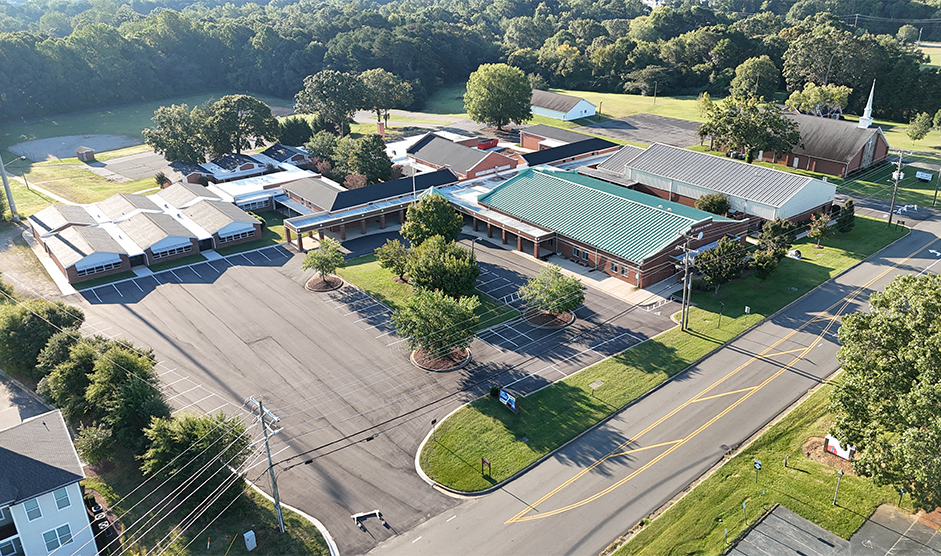“Sand, leads me to the shores of new discoveries.” ― Anthony T. Hincks
If you are looking for a state park that offers something totally unique with desert sands and cooling water, then Jockey’s Ridge State Park, located on the Outer Banks of North Carolina, has the tallest “living” sand dune on the East Coast.
According to state officials, Jockey’s Ridge had the most visitors out of any NC state park in 2021 and is on track to reach that accolade in 2022.
The 426-acre state park consists of sand dunes that stay “alive” by continuously changing in shape and size, along with the maritime forest and Roanoke Sound, which provide habitats for land and aquatic wildlife. There’s an estimated 30 million tons of sand that can reach 140 degrees during summer. So beware and be prepared.
The wind has the greatest impact on the dunes at Jockey’s Ridge in a natural process that could be described as a tug-of-war. The predominant wind direction throughout the year comes from the northeast blowing to the southwest. But during the warmer months, the predominant wind direction switches to the southwest blowing to the northeast. Because of these seasonal changes, the sand is blown back and forth. The top layers of the sand are constantly moving and sculpting the dunes and only a few inches below you will find moisture as the sand acts as a sponge for the water around it.

BRIEF HISTORY
The sand dunes resulted from the erosion and accumulation of three minerals, mainly quartz, over millions of years. Thousands of years of high winds, hurricanes and storm surges then brought the individual sand grains onto the land.
Changes are still happening today as the predominant winds gradually shift the dunes towards the Roanoke Sound. The evolving landscape has previously caused some issues for people living nearby.
The 2018 hurricane season shifted the sands several meters, encroaching onto people’s backyards. In response, crews worked to relocate 200,000 tons of sand from the southeast side of the park to the north side.
RECREATION
For those into hiking, the park has three trails: the Boardwalk with a partial view of the dunes, the Soundside Nature Trail and the Tracks in the Sand Trail marked throughout the dunes. Park rangers also lead interpretive programs, including guided hikes, to educate people about the park’s natural world.
The first trail is the boardwalk that takes you from the visitor center parking lot to the base of the dune area. The boardwalk is an easy walk that takes you through the maritime forest area.
The Soundside Nature Trail begins at the West Soundside Road parking lot. This mile-long loop trail will take you through a quick section of maritime forest and then along the Roanoke Sound. It’s a great way to see the shallow sound waters that serve as a nursery ground for so many animal species.
The third trail is the Tracks in the Sand Trail. This trail begins in the southwest corner of the Jockey’s Ridge visitor center parking lot. The trail is self-guided and takes you across the sand over towards the Roanoke Sound. It’s only 1.5 miles in length, so this is a pretty quick hike as well. Since the sand is constantly shifting with the wind, this trail is just marked with posts to keep you going the right direction. In addition to the three hiking trails the following activities are available:
- Paddling
- Swimming
- Picnicking
- Hang Gliding
- Sandboarding
- Kiteboarding and Windsurfing
- Birdwatching

UNIQUE FEATURES
Because of the wind, the sand dunes are ideal for hang gliding and flying kites. Kitty Hawk Kites Adventures operates the largest hang gliding school in the world at Jockey’s Ridge. The company has taught over 300,000 people how to hang glide off the sand dunes since the school opened in 1974, and is one of the very best places in the entire US to learn how to hang glide. This is due to a number of factors including the area’s consistent wind and soft packed sand in case you lose control of your glider.
Sandboarding is also popular at Jockey’s Ridge, which is like snowboarding but on sand. According to the park’s website, you can bring a board with or without bindings, but cardboard will not work on the sand. Boards are also available for rent through Kitty Hawk Kites.
Finally, there is actually a putt-putt golf course buried under the dunes! When driving past the dunes, you may notice the top of a castle sticking up out of the sand on the southern end of the dunes. Jockey’s Ridge Mini Golf opened in the 70s and featured an 18 hole course, a giant cobra, an octopus, a castle, and a pirate ship that functioned as the office and check-in building.
When it seemed inevitable that the dunes were going to overtake the Nags Head attraction, the state purchased the course from the owner at the time.
AT THE END OF THE DAY
It is also worth mentioning that there is no entry fee to get into this state park, but with the steep dunes, strong winds and seasonally hot temperatures, a visit will require good stamina and awareness. According to the park rangers and staff, there are several tips to keep in mind when visiting:
- Stay hydrated and have water with you. Heat emergencies are the main medical incidents during the summer months.
- Get to the park early to recreate. Avoid recreating in the middle of the day when it’s hot outside.
- For those bringing a dog, be mindful of how hot the sand gets.
- Wear sunscreen and proper head coverage.
- If there’s inclement weather in the area, wait for it to pass or come another time.
- To sign up for events, programs and upcoming activities at Jockey’s Ridge, visit the state park system’s website: gov/state-parks/jockeys-ridge-state-park
I hope this brief overview encourages you to visit Jockey’s Ridge State Park. Winter can be one of the best times to go if you want to avoid the crowds and do not mind bundling up, if necessary. At the end of the day one of the biggest attractions on the Outer Banks is sunset viewing at Jockey’s Ridge, and is a must see final treat when visiting the park.
Safe Travels,
Robin



















